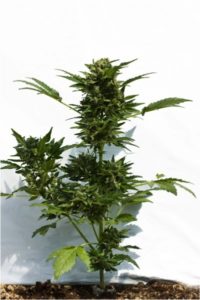 Some call it the “green rush” – referencing marijuana from California. Marijuana growers account for $14 billion a year in sales in California, making it the state’s most valuable cash crop.
Some call it the “green rush” – referencing marijuana from California. Marijuana growers account for $14 billion a year in sales in California, making it the state’s most valuable cash crop.
The acceptance of marijuana in California started with the Moscone Act in 1976 which changed the violation for small-scale possession from a felony to a misdemeanor. The law was pressed because of a high number of marijuana arrests clogging the criminal system.
Then in 1979, Berkeley, California voters passed the Berkeley Marijuana Initiative, an ordinance that makes the possession, cultivation, sale, and transportation of marijuana the police department’s lowest priority. The law is still on the books today. This was the beginning of California’s medical marijuana laws and set the stage for future medical dispensaries and marijuana from California.
1st Medical Marijuana From California
 California was the first state in the United States that legalized marijuana for medical purposes. Medical cannabis may be legally used and cultivated by qualified patients in California under Proposition 215, provided they have approval from a licensed physician.
California was the first state in the United States that legalized marijuana for medical purposes. Medical cannabis may be legally used and cultivated by qualified patients in California under Proposition 215, provided they have approval from a licensed physician.
Laws legalizing medical marijuana in California were approved on November 6, 1996, with a 56% vote. The law removed criminal penalties on a state level that involves the usage, possession, and farming of medical cannabis.
Supporters of medical marijuana argue that it can be a safe and effective treatment for the symptoms of cancer, AIDS, multiple sclerosis, pain, glaucoma, epilepsy, and other conditions. Patients who are recommended by their physicians to use medical cannabis for treatment are provided legal protection under this law.
An amendment to the law was approved in 2003 imposing guidelines on the amount of medical marijuana to be used or cultivated by patients and their caregivers. The amendment also created a medical marijuana patient registry established by the California Department of Public Health. For California marijuana dispensaries, this amendment gave them legal protection from the state.
The Start Of California Marijuana Dispensaries Craze
 The San Francisco Cannabis Buyers Club was the first public medical marijuana dispensary in the United States and it was established in 1992. The name eventually changed to Cannabis Cultivators Club and Cannabis Healing Club.
The San Francisco Cannabis Buyers Club was the first public medical marijuana dispensary in the United States and it was established in 1992. The name eventually changed to Cannabis Cultivators Club and Cannabis Healing Club.
To date, the largest medical marijuana dispensary is also located in California, Harborside Health Center, which opened in 2006 and caters to more than 100,000 patients.
Just last year, Harborside Health Center got into a controversy when the landlords complained that the center violated federal laws. As with other dispensaries all over the country, California marijuana dispensaries have helped to provide the foundation and structure of how dispensaries operate in other medical states.
Medical marijuana dispensaries are also called collectives, cooperatives, or co-ops. To comply with state legislation, these dispensaries have to adhere to strict guidelines and requirements to legally operate.
California Marijuana Dispensaries Legally Operate
 California marijuana dispensaries have to classify their business as either for-profit or non-profit organizations before getting a license to operate. They should obtain proper forms and permits. Since they are also considered a form of business, they are obliged to pay taxes.
California marijuana dispensaries have to classify their business as either for-profit or non-profit organizations before getting a license to operate. They should obtain proper forms and permits. Since they are also considered a form of business, they are obliged to pay taxes.
Operators should also fully understand and follow state and local guidelines. They should also maintain good relationships with law enforcement agencies and the government. Opening California marijuana dispensaries can cost $30,000 to $500,000.
These costs are inclusive of application and license fees, building fees, marijuana cultivation, and legal consultation. Marijuana plants should be kept safe. California marijuana dispensaries should be tightly secured with security cameras and security personnel. Many dispensaries nowadays adopt state-of-the-art security measures to make sure of its safety.
Membership is also important in California marijuana dispensaries. Patients and caregivers should undergo an application process and should provide the physician’s recommendation and contact information. Patients should present their identification cards upon their visit.
California marijuana dispensaries should verify all this information, particularly the physician’s recommendation. Keep copies of pertinent information provided by the patient. Most importantly, all patients and caregivers should sign a membership contract.
Dispensaries in California are required to keep track of marijuana distribution as mandated by the Medical Marijuana Program Act (MMP). They are only required to grow or provide eight (8) ounces of dried marijuana, six (6) mature marijuana plants, or twelve (12) immature plants for patients or caregivers.
These marijuana dispensaries need to document how many marijuana plants they provided to their members. These are just some laws that are required to be followed by dispensaries to operate in California. As with any laws, violations are dealt with accordingly so it is best to always follow them.
Let us know what you think.




Responses